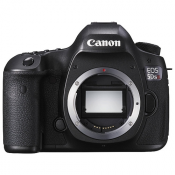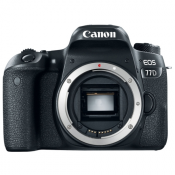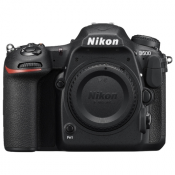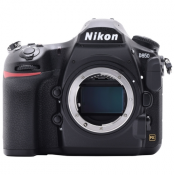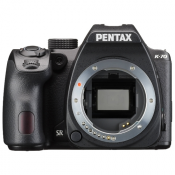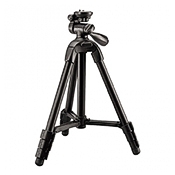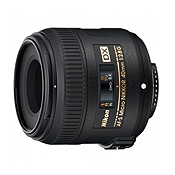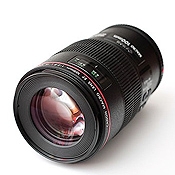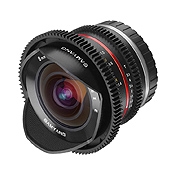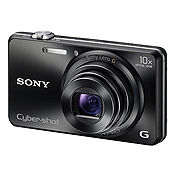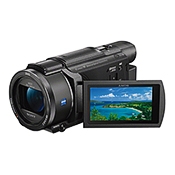Canon EOS 80D Kit
Short review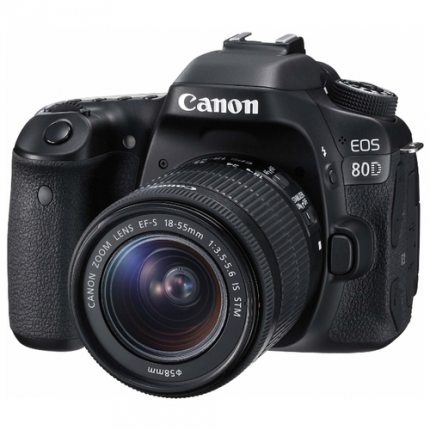
Selected in the rating
6
Best rating
SLR cameras
For Professionals - Sensor: APS-C - Lens Included - Video Resolution: Full HD
Buy Canon EOS 80D Kit
Canon EOS 80D Kit Specifications
Yandex.Market data
| Camera | |
| Camera type | mirror |
| Lens | |
| Interchangeable lens support | Canon EF / EF-S mount |
| Lens included | there is |
| Matrix | |
| Total Pixels | 25.8 M |
| Effective Pixels | 24.2 M |
| The size | APS-C (22.3 x 14.9 mm) |
| Crop factor | 1.6 |
| Maximum resolution | 6000 x 4000 |
| Matrix type | CMOS |
| Color depth | 42 bit |
| Sensitivity | 100 - 3200 ISO, Auto ISO |
| Extended ISO values | ISO100, ISO6400, ISO12800, ISO25600 |
| Matrix cleaning function | there is |
| Functionality | |
| White balance | automatic, manual, from the list, bracketing |
| Flash | built-in, up to 12 m, red-eye reduction, shoe, bracketing, E-TTL II |
| Image Stabilizer (Still Image) | is absent |
| Shooting modes | |
| Shooting speed | 7 fps |
| Maximum burst of shots | 110 for JPEG, 25 for RAW |
| Timer | there is |
| Timer running time | 2, 10 s |
| Time-lapse mode | there is |
| Aspect ratio (still image) | 4:3, 3:2, 1:1, 16:9 |
| Viewfinder and LCD | |
| Viewfinder | mirrored (TTL) |
| Using the screen as a viewfinder | there is |
| Viewfinder field of view | 100% |
| LCD screen | 1,040,000 dots, 3 inches |
| LCD screen type | swivel, touch |
| Second screen | there is |
| Exposition | |
| Excerpt | 30 - 1/8000 s |
| X-Sync shutter speed | 1/250 s |
| Manual setting of shutter speed and aperture | there is |
| Automatic exposure processing | shutter priority, aperture priority |
| Exposure compensation | +/- 5 EV in 1/3-stop increments |
| Exposure metering | multi-zone, center-weighted, general (Evaluative), point |
| Exposure Bracketing | there is |
| Focusing | |
| Autofocus type | phase |
| Focus points | 45, of which 45 are cross |
| AF illuminator | there is |
| Manual focus | there is |
| Autofocus correction | there is |
| Face Focus | there is |
| Memory and interfaces | |
| Memory card type | SD, SDHC, SDXC |
| Image formats | JPEG (2 levels compressed), RAW |
| RAW + JPEG recording mode | there is |
| Interfaces | USB 2.0, video, HDMI, mic-in, audio, Wi-Fi, NFC, remote control jack |
| Food | |
| Battery format | your own |
| Number of batteries | 1 |
| Battery capacity | 960 photos |
| Battery pack | BG-E14 |
| Video and sound recording | |
| Video recording | there is |
| Video recording format | MOV, MP4 |
| Video codecs | MPEG4 |
| Maximum video resolution | 1920x1080 |
| Maximum video frame rate | 60 frames / s |
| Maximum frame rate when shooting HD video | 50/60 fps @ 1280x720, 50/60 fps @ 1920x1080 |
| Video recording time | video file size 4 GB or 29 minutes |
| Sound recording | there is |
| Recording audio comments | no |
| Other functions and features | |
| Body material | plastic |
| Additional features | tripod mount, remote control, orientation sensor, computer control, HDR shooting |
| Dimensions and weight | |
| The size | 139x105x79 mm, without lens |
| Weight | 730 g, with batteries |
Opinions from the Canon EOS 80D Kit
Yandex.Market data
Advantages:
For a long time I was looking for a camera in the middle price range, which would be suitable for shooting photos and videos at the same time, and, in the end, in April 2017 I settled on this model. Having been filming with it for almost a year, I can say that I was absolutely not mistaken with the choice for my specific needs. Therefore, when choosing a camera, always be guided by your current and future needs, and not "technology trends". Canon went to great lengths and made a really cool all-round model for shooting stills and videos for the average budget.In terms of price / quality ratio, one of the best models for today. If you are tormented by the question 70D or 80D, then the answer is definitely 80D. Should you upgrade from 70D to 80D? It depends on you. The camera is really better in many ways, but I'd rather add some more money and get an L-series lens. This will have a more serious impact on the quality of the picture. 80D or 6D for photos and videos? 6D for stills, 80D for video for feature set and shooting convenience, but depth of field, picture quality and working ISO values are still better at full frame. It's up to you to decide. Pros: - a beautiful picture for a good price; - good dynamic range - 13.2 (among Canon cameras, the dynamic range is better only in 1Dx Mark II - 13.5, 5D Mark IV - 13.6); - 24 megapixel resolution - very good for a crop matrix; - rotating touch screen; - The best Dual Pixel autofocus system and 45 focus points - fast in photo mode, smooth in video mode by touching on the screen; - holds the battery well - 960 shots or 2 hours 40 minutes of video shooting; - headphone jack to control the level and quality of sound; - stunning colors (skin tones are always natural to the maximum - Canon is really the best in this regard on the market); - shooting 7 frames per second for photos and recording 1080p 60 frames per second; - customizable time-lapse shooting mode; - built-in Wi-Fi - you can watch photos on your phone even while shooting and use it as a remote control.
Disadvantages:
Cons: - with ISO, you have to be as careful as possible - with good light there are no problems, with bad light, noise appears even at quite working values up to 1600, therefore, if you are going to shoot in a dark environment and want to get high quality pictures, then I recommend looking towards full frame; - personally important for me moment - the lack of 1080p 120 frames per second (currently only available in 1Dx Mark II and competitors Sony, Panasonic, etc.); - there was not enough space in the comments, so I am writing to the disadvantages, although I do not consider it a significant disadvantage - the lack of shooting a 4k video (in terms of commerce, the thing is pointless, because hardly anyone will pay you extra for 4k, and if it does, then an extra 10-15 thousand are not worth the hassle that you face when editing such a volume of data). P.S. I also advise you to invest as much as possible in L-series lenses. They will be rescued in conditions with poor lighting and will serve well in the future on a full frame. Glasses I've tried on this camera: 18-135 3.5-5.6 IS USM nano - focus on this lens works amazingly. A very cool zoom for a whale. Shot with it for the most part, except for moments where an ultra-wide angle was needed. At values closer to the focal point, the picture becomes more and more terrible. 10-18 IS STM - good shirik for my money, but soapy and dark for "today's me". Buy a lens hood and ND filter for outdoor photography right away. 24 2.8 STM - cheap and cool fix. Sharp and beautiful picture. Compared to previous lenses, it is quite light. Of these three, only he stayed with me. L-series lenses are now in the process of purchasing. From time to time we got our hands on: Samyang 8mm 2.8 is a good fish. The 50 1.8 STM is a good fix for portraits, but the focus is terrible. Get the second version - the picture and focus on it are excellent! 24-70 2.8L USM, 24 1.4L - no words. L-series lenses are excellent.
Comment:
And so, the question that torments everyone most of all: "Why not Sony?" Sony really makes some cool and affordable cameras, and maybe I would get myself something like the new a7 RIII for certain needs (dynamic range, working ISO and resolution are incredible on this camera), but here's a list of reasons that really matter. me (for everyone they may differ, so someone is more suitable for Sony, Nikon, Panasonic, etc.), and for which I will continue to use Canon technology: - I do not think that the quality of Canon lenses is anything different from Sony, but Canon's superiority in variety and affordability is clear; - Canon's equipment is obviously stronger than Sony - I have never seen a Sony carcass flying in the mountains and it's scary to imagine how this small flimsy creature can withstand such tests, but I had to fall from Canon and I know one photographer who’s muddle-headed, whose 6D tumbles along the slope almost at every campaign - outwardly killed, but everything works with a bang; - a separate topic about Sony malfunctions in different temperature conditions - I did not test it myself, but I heard reviews - I had no problems with Canon; - Sony are compact and lightweight and for some it is really a plus,but with a height of 192 cm in my hand, Canon is much more comfortable and confident (personal preference); - Sony has a very peculiar, beautiful and sharp picture (due to the mirrorless design and the absence of a low-pass filter), in terms of dynamic range and working ISO values, they are definitely ahead of Canon, but it is a known fact that Canon colors are more natural, especially skin tones (of course, everything can be corrected later on the computer, but this is a waste of time, at least when it comes to commerce); - 5-6 Sony batteries are required for a full day of shooting, 2-3 are enough for Canon; - Sony has good autofocus and has a cool feature for portrait photographers - eye focusing, but Canon's Dual PIxel is definitely the best focusing system available today.
13 February 2019, Moscow
Advantages:
- New matrix. It falls short of competitors, but compared to the 70d it looks good. Dynamic range at low iso is great. - Video. Any tracking autofocus works well, the fullHD60 has finally appeared. - Wireless bells and whistles. At first I was skeptical about them, but they turned out to be very convenient. - Perfect for time lapses: there is a built-in interval timer (no remotes are needed, hurray) and can record video right away. - Whale lens. For a photo, many will reject it (although it is not bad at all), but for a video it is good enough - nimble, silent, accurate.
Disadvantages:
- Expensive. Although this is rather a disadvantage of the ruble. - We still can't do 4k video. - You expect some kind of miracle from a new and not the cheapest camera .. But it is not here, just a slightly improved 70d.
Comment:
About iso - the matrix, although new, is not a breakthrough. Until 1600 everything is fine. Further, it makes a noticeable noise. 3200 is already conditionally working - it's hard to press the noise, the colors \ dd suffer greatly. In general, it is better not to climb above 400iso - in this range the camera feels great and can even compete a little with the fullframes of previous generations. If you really want to crop canon, you can take it. If you don't need the goodies in the form of fullHD60, built-in lens adjustment, rate of fire, shutter speed at 1/8000, etc. - a good option would be 750d \ 760d. In general, the camera is good if you are a fan of the brand and are saddled with a fleet of appropriate optics.
October 16, 2016, Podolsk
Advantages:
Great camera. Very nimble (continuous shooting, autofocus). Clarity on top (24 megapixels). Easily copes with shooting in low light (ISO 6400 is quite working).
Disadvantages:
So far, I'm extremely pleased. The only "but" is the kit lens - well, it's cheap (I don't use it in the end).
Comment:
Everything is fine, examples of my photos taken with this camera can be viewed here: https://webwarr.myportfolio.com/nature
October 4, 2016, Moscow
Advantages:
really liked it. until I figured it out. but thanks to the clear menu and excellent user-friendly navigation, the learning process is very fast and interesting. photos and videos are very high quality! great option for getting acquainted with a DSLR.
Disadvantages:
price
Comment:
13 february 2017
